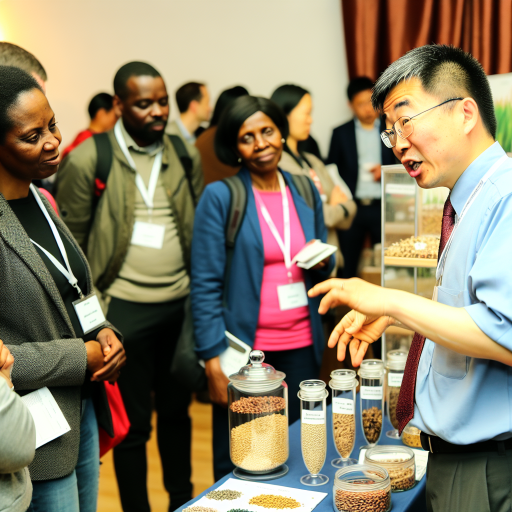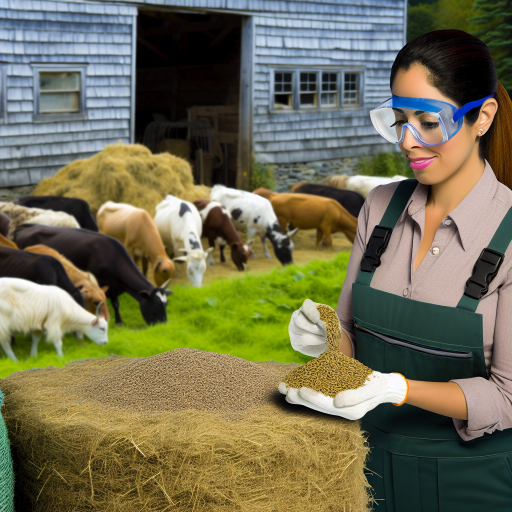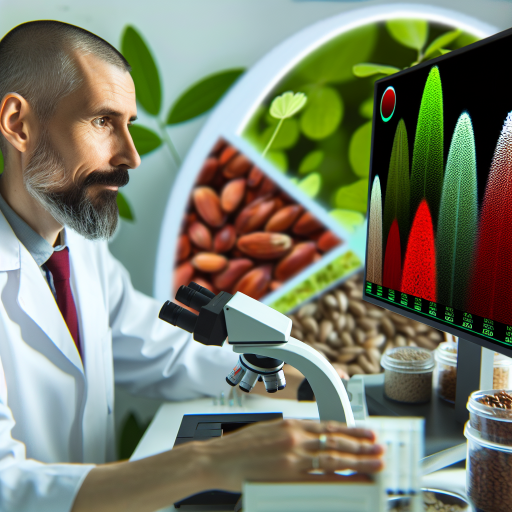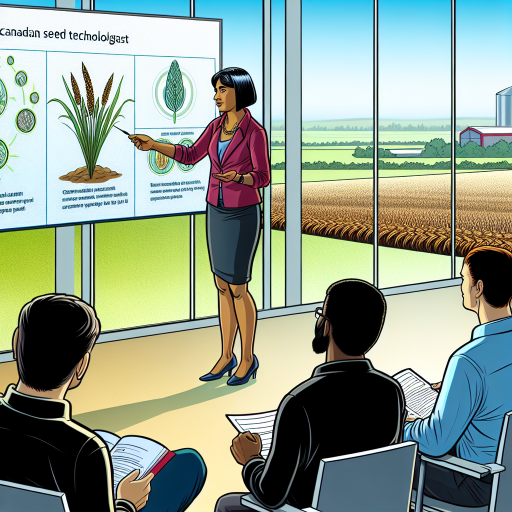Introduction to Common Seed Diseases
Seed diseases significantly impact crop production worldwide.
Farmers and technologists must understand these issues thoroughly.
Knowing the common diseases helps in devising effective management strategies.
Seed diseases often lead to poor germination and plant health.
Various pathogens, including fungi, bacteria, and viruses, cause these diseases.
Impact of Seed Diseases
The effects of seed diseases extend beyond individual plants.
Infected seeds can reduce overall crop yield and quality.
This, in turn, affects food supply and farmer income.
Moreover, seed diseases can spread quickly in farms.
Prevention and control are vital in managing these risks.
Common Types of Seed Diseases
Several notable seed diseases frequently trouble growers.
- Damping-off: Often caused by various soilborne pathogens.
- Seed rot: This occurs during the germination phase.
- Bacterial wilt: Affects the vascular system of plants.
- Fusarium wilt: This disease leads to plant decay.
- Viral infections: These can hinder plant growth and production.
Technological Solutions for Managing Seed Diseases
Technologists employ various methods to combat seed diseases.
Seed treatment involves using chemicals to protect seeds before planting.
This process helps reduce the risk of diseases during germination.
Genetic modification offers another innovative approach.
Scientists develop disease-resistant seed varieties through this method.
Monitoring and Testing Procedures
Testing seeds for diseases offers critical insights.
Farmers can utilize laboratory analysis for this purpose.
Regular monitoring of crops also plays a key role.
This helps identify and address issues early on.
Education and Training Programs
Education is crucial in preventing and managing seed diseases.
Workshops and training provide farmers with essential knowledge.
Technologists often collaborate with agricultural extension services.
These initiatives help disseminate best practices and effective treatments.
Overview of Major Seed Diseases Affecting Crops
Types of Seed Diseases
Seed diseases can severely impact crop yield and quality.
Unlock Your Career Potential
Visualize a clear path to success with our tailored Career Consulting service. Personalized insights in just 1-3 days.
Get StartedCommon types include fungal, bacterial, and viral diseases.
Fungal diseases often thrive in moist conditions.
Bacterial infections can spread rapidly through contaminated soil.
Viral diseases may cause stunted growth and discoloration.
Fungal Seed Diseases
Fungal infections pose a significant threat to seed health.
One prevalent fungal disease is Fusarium, which can cause seed rot.
Another common issue is Pythium, known for damping-off seedlings.
Management includes rotating crops and using resistant varieties.
Proper seed treatments can also reduce infection risks.
Bacterial Seed Diseases
Bacterial diseases can infect seeds at various stages of growth.
One example is bacterial blight, affecting many legumes.
Infection often occurs when moisture levels are high.
To prevent bacterial diseases, farmers should sanitize equipment.
Additionally, planting disease-free seeds is essential.
Viral Seed Diseases
Viral diseases can lead to severe crop losses.
These infections often spread through insect vectors.
Common symptoms include mottling and leaf curling.
Controlling pests helps mitigate the spread of these viruses.
Planting tolerant varieties can also safeguard crops.
Technological Solutions to Disease Management
Technologists play a crucial role in managing seed diseases.
They develop resistant seed varieties using biotechnology.
Genetic engineering can create strains with disease resistance.
Advanced diagnostics help detect diseases early on.
Remote sensing technology can monitor crop health from above.
Integrated Disease Management Strategies
Combining various practices enhances disease control.
Cultural practices such as crop rotation minimize pathogens.
Biological control methods utilize beneficial organisms.
Farmers can also apply chemical treatments when necessary.
Education and training improve disease management techniques.
Identifying Symptoms of Seed Diseases
Common Symptoms of Seed Diseases
Seed diseases can manifest in various symptoms.
Recognizing these signs promptly is crucial for effective management.
Common symptoms include discoloration, rotting, and stunted growth.
Seeds may exhibit wilting or yellowing leaves.
Visual Indicators
Visual indicators help identify affected seeds quickly.
Discoloration often appears as browning or blackening.
Fungal infections can cause fuzzy or powdery growths.
Shriveled seeds indicate potential damage or disease.
Behavioral Changes
Behavioral changes in seedlings can signal underlying problems.
Infected seedlings may grow slower than healthy ones.
Deformations in leaf structure often indicate disease presence.
Moreover, plants that wilt unexpectedly should be examined.
Preventative Measures
Preventatives can reduce the likelihood of seed diseases.
Using certified disease-free seeds is essential.
Additionally, practicing crop rotation minimizes disease buildup.
Soil health plays a critical role in preventing disease spread.
Technological Solutions
Technologists employ various solutions to combat seed diseases.
Genetic research aims to create disease-resistant seed varieties.
Furthermore, digital monitoring tools track environmental conditions.
Innovative treatments include biopesticides and antifungal agents.
Gain More Insights: Tools and Equipment Used by Seed Technologists
Impact of Seed Diseases on Crop Yield and Quality
Understanding Seed Diseases
Seed diseases can significantly impact agriculture.
They hinder plant growth and development.
Many diseases arise from pathogens such as fungi, bacteria, and viruses.
These pathogens may affect seeds before germination.
After germination, they can compromise overall crop health.
Consequences on Crop Yield
Seed diseases often result in reduced crop yield.
Healthy seeds are vital for optimal productivity.
Damaged seeds may lead to lower germination rates.
This decreases the number of plants that can produce crops.
As a consequence, farmers face financial losses.
Effects on Crop Quality
Seed diseases also diminish crop quality.
Diseased plants produce inferior fruits and vegetables.
These crops may be smaller and less nutritious.
Furthermore, they can become more susceptible to pests.
Ultimately, poor quality affects marketability.
Long-Term Economic Impact
The economic fallout from seed diseases is substantial.
Increased production costs arise from disease management.
Farmers may need to invest in pesticides and herbicides.
Additionally, crop insurance costs may rise.
Prolonged issues can threaten farm viability and sustainability.
Technological Solutions
Technologists are actively addressing these challenges.
They develop resistant seed varieties through genetic engineering.
Innovative treatments enhance seed health pre-planting.
Advanced imaging technology allows for early disease detection.
Integrated pest management practices also help mitigate damage.
Uncover the Details: The Role of Soil Scientists in Canada’s Sustainable Agriculture Movement
Role of Seed Technologists in Disease Prevention
Understanding Seed Diseases
Seed diseases can significantly impact crop yield and quality.
Common diseases include damping-off, seed rot, and blight.
Seed technologists play a vital role in combating these issues.
Identifying Seed Diseases
Accurate identification of seed diseases is crucial for prevention.
Seed technologists utilize advanced diagnostic tools to detect pathogens.
They perform thorough assessments of seeds before planting.
Developing Resistant Seed Varieties
Creating disease-resistant seed varieties is a top priority.
Seed technologists collaborate with plant breeders for this task.
They employ genetic techniques to enhance resistance.
Implementing Quality Control Measures
Quality control is essential in seed production processes.
Seed technologists enforce strict guidelines to maintain seed health.
They monitor seeds for contamination and disease symptoms.
Education and Training for Farmers
Educating farmers about seed diseases is critical.
Seed technologists provide training on best practices for seed treatment.
They share knowledge about disease recognition and management strategies.
Utilizing Technology for Disease Management
Technological advancements aid in managing seed diseases effectively.
Seed technologists adopt precision agricultural practices.
They use data analytics to predict disease outbreaks in crops.
Collaborating with Other Experts
Collaboration enhances the effectiveness of disease prevention efforts.
Seed technologists work alongside agronomists and pathologists.
This teamwork fosters innovation and improved practices.
Gain More Insights: How AgriTech is Revolutionizing Farming Careers in Canada
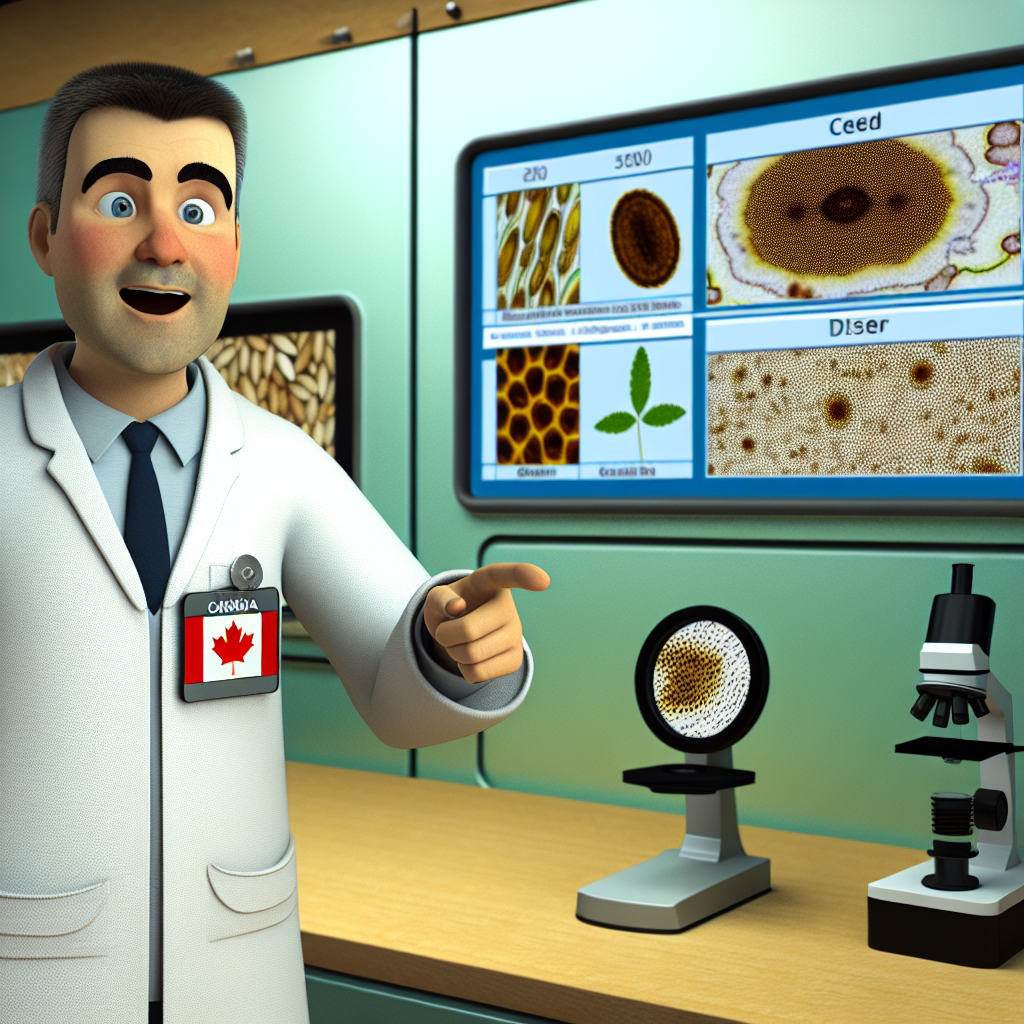
Techniques for Disease Detection in Seeds
Importance of Early Detection
Early detection of seed diseases is crucial for preserving crop yield.
It helps in managing potential outbreaks effectively.
Timely identification minimizes losses and increases profitability.
Visual Inspection Methods
Visual inspection remains a fundamental technique for detecting seed diseases.
Technologists examine seeds under natural and artificial light.
This method highlights visible signs of fungal or bacterial infections.
Color variations, mold growth, and unusual shapes often indicate disease.
Use of Molecular Techniques
Molecular techniques offer advanced options for seed disease detection.
Polymerase chain reaction (PCR) identifies specific pathogens in seeds.
This method provides high sensitivity and specificity.
Moreover, it enables quick results, aiding farmers in urgent situations.
Employing Imaging Technology
Imaging technology adds precision to seed disease detection.
It utilizes infrared and hyperspectral imaging techniques.
These methods capture subtle changes in seed properties.
Consequently, they reveal early signs of disease before visible symptoms emerge.
Leveraging Artificial Intelligence
Artificial intelligence enhances disease detection capabilities immensely.
AI algorithms analyze large data sets for patterns in seed health.
Machine learning models predict disease outbreaks based on environmental conditions.
Overall, AI offers proactive solutions for farmers and technologists alike.
Field Sampling and Testing
Field sampling is an essential part of the detection process.
Technologists collect samples from various planting locations.
These samples undergo laboratory testing for pathogens.
This technique confirms the presence of diseases before they spread.
Implementing Biotechnology Solutions
Biotechnology offers innovative solutions for seed disease management.
Genetic engineering techniques produce disease-resistant seed varieties.
This approach reduces the risk of significant crop losses.
Furthermore, it cuts down the need for chemical treatments.
Explore Further: How Climate Change Is Transforming Careers in Canada’s Agricultural Sector
Preventive Measures and Treatment Options for Seed Diseases
Understanding Seed Diseases
Seed diseases degrade germination rates and overall plant health.
Common pathogens include fungi, bacteria, and viruses.
Identifying these diseases early can prevent widespread crop damage.
Implementing Preventive Measures
Proper sanitation is crucial for preventing seed diseases.
Cleaning tools, containers, and surfaces limits pathogen spread.
Using certified disease-free seeds also helps mitigate risks.
Additionally, rotating crops can disrupt disease cycles.
Maintaining optimal storage conditions reduces seed disease chances.
Utilizing Treatment Options
Various treatments can address seed diseases effectively.
Seed treatments with fungicides or insecticides protect against pathogens.
Additionally, biological treatments promote healthier seed growth.
Fungicidal Treatments
Fungicides can prevent and control fungal infections in seeds.
Choosing the right fungicide depends on the specific pathogen.
Application methods vary, from soaking seeds to coating them.
Biological Controls
Using beneficial microbes can enhance seed health.
These microbes suppress harmful pathogens naturally.
Furthermore, they can improve nutrient availability in the soil.
Monitoring and Evaluation
Regular monitoring is essential for managing seed diseases.
Conducting visual inspections can help identify issues early.
Laboratory testing offers more precise identification of pathogens.
Feedback from evaluations guides future preventive strategies.
Case Studies of Successful Disease Management in Seeds
Understanding Seed Diseases
Seed diseases pose significant threats to agriculture.
These diseases can reduce crop yields and quality.
Identifying and managing these diseases is crucial.
Technologists play a vital role in this process.
Case Study: Fusarium in Corn Seed
Fusarium is a common pathogen affecting corn seeds.
It causes significant seed rot, impacting germination rates.
Agricultural Biotechnology Inc. introduced a resistant seed variety.
This variety showed increased vigor and strong root development.
As a result, farmers experienced higher yield and profit margins.
Case Study: Powdery Mildew in Zucchini
Powdery mildew is a fungal disease that affects zucchini plants.
This fungus can spread quickly in warm environments.
GreenFields Tech developed a sprayable organic solution.
This solution consisted of natural fungi antagonists.
Subsequent trials showed a 75% reduction in disease incidence.
Case Study: Bacterial Blight in Soybeans
Bacterial blight can drastically reduce soybean yields.
Farmers often faced significant crop losses due to this blight.
EcoSeed Solutions implemented a comprehensive monitoring system.
This system combined satellite imagery and ground sensors.
As a result, farmers received timely alerts for disease outbreaks.
Technological Innovations in Disease Management
Technologists have developed several innovative methods.
These methods enhance seed health and reduce disease risks.
- Biological control agents help manage various pathogens.
- Genetic modifications create disease-resistant seed varieties.
- Data analytics improve disease forecasting and intervention strategies.
Collaboration in Disease Management
Collaboration between farmers and technologists is essential.
Both parties can share valuable insights and expertise.
This teamwork enhances the effectiveness of disease management.
Additionally, it supports the ongoing development of resilient seed varieties.

